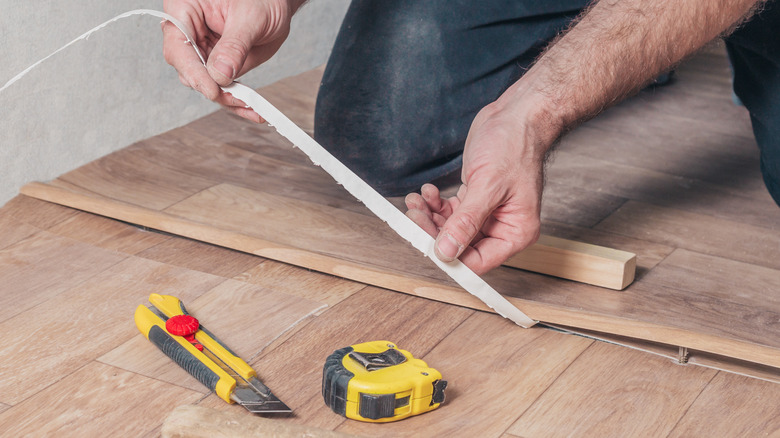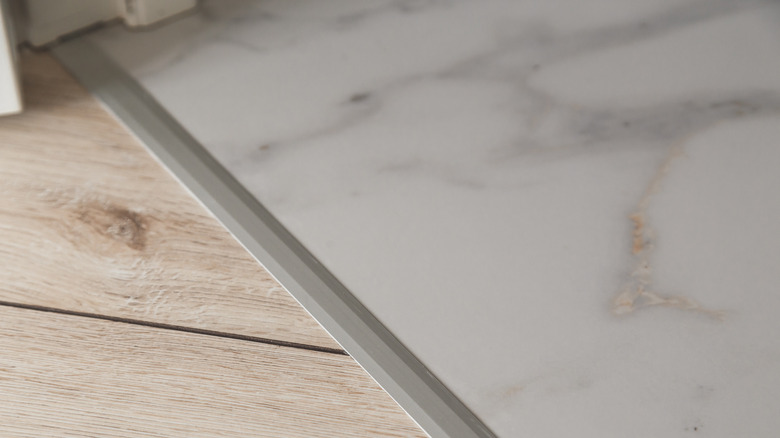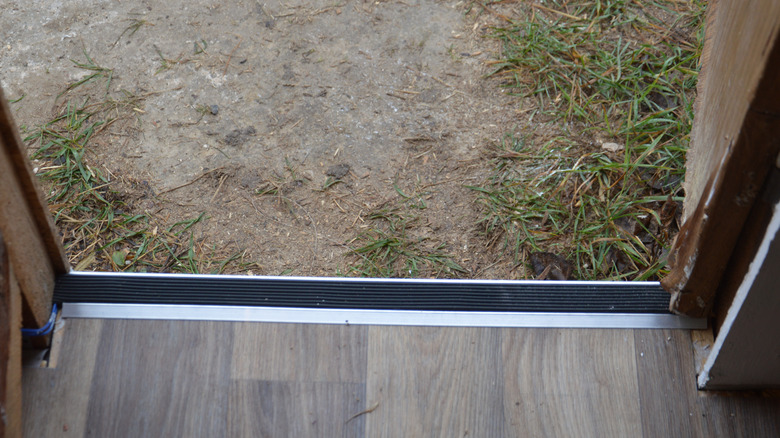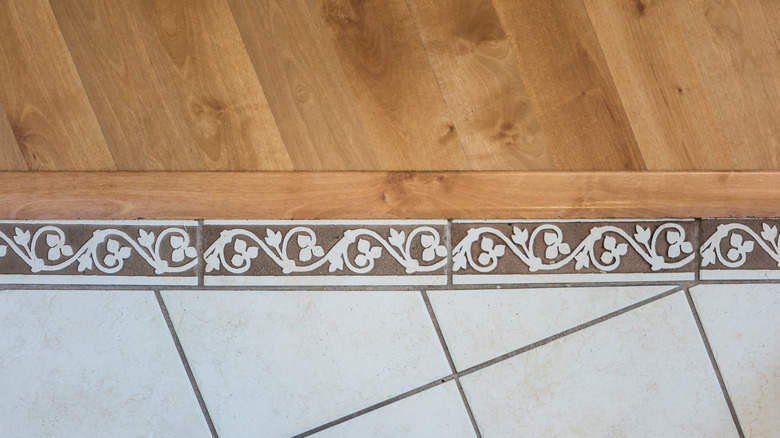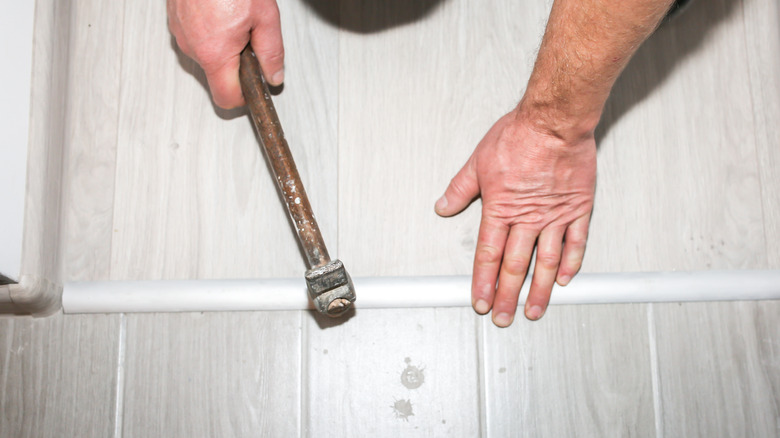What Are Transition Strips And How Can They Be Used In Your Home?
When designing a space, it all comes down to the little details. Sure, a bold accent wall or a fancy piece of furniture adds an element that guests will be drawn to right away, but without a solid, seamless foundation, any interior design vision can fall short.
Picking out transition strips for your brand new flooring isn't quite as exciting as choosing the wallpaper for your focal piece or furniture shopping at Restoration Hardware, but it's just as crucial (and, fortunately, way less expensive!). Once your latest home project is wrapped up, you'll be grateful that you focused on the tiny details just as much as you fretted over the big ones. Transition strips are the ultimate example of putting the finishing touches on a space — it's the interior design equivalent of dotting your Is and crossing your Ts!
If you're not sure where to start when it comes to finishing up your flooring project, we have you covered! Read on to check out all you need to know about transition strips, and determine where to actually use each of these last touches in your home.
When you need transition strips
If you're renovating an existing home, then you've likely encountered a few less-than-ideal problems matching up your flooring. Maybe you had some old hardwood in the living room that you restored, but your kitchen was begging for some new tile — that's where transition strips come in!
These strips are thin pieces of material cut to fill in or cover any gaps between flooring. They act as a visual cue when walking between rooms, help reduce any height differences across different materials (and, in turn, they help reduce the inevitable toe-stubbing). Transition strips also help minimize the cost of your flooring project, since they can be used in doorways, closets, and low traffic areas where you want to seamlessly integrate something cheaper (via BuildDirect).
Transition strips offer a sense of consistency and completeness in a space, but they have a function beyond cosmetics, too. According to The Carpet Guys, wood or laminate requires some sort of expansion gap to allow the flooring to contract with changing temperatures and moisture levels. Transition strips are a great option to cover those spaces in larger, open-concept spaces.
Types of transition strips
Per Pro! Flooring Brokers, if you're working on installing entirely new wood or laminate flooring, you'll need a T-bar transition strip. These are T-shaped strips with a small portion that inserts in the gap between flooring of the same height to join them together. Carpet transition strips, on the other hand, have teeth on one side that grip the existing rug and join it with wood to reduce the difference in height.
For two different floors or between doorways, opt for an end bar transition strip. This is a notched piece that typically matches one of the two types of flooring you're working with, and is meant to help level out any height differences. To seamlessly incorporate your flooring into the second story, grab some stair nosing strips — these have a 90-degree downward angle designed specifically for the staircase.
Believe it or not, but the baseboard trim in your home is also considered a transition strip! It's intended to mark a transition between rooms, as well as cover that small little gap between your flooring and your walls, and is most often installed in rooms with wood or laminate floors for that reason. Quarter rounds are shorter strips that cover whatever a baseboard can't.
Picking a transition strip isn't as easy as a quick trip to the hardware store, since the type of transition strip you need is dependent on what you're trying to achieve, but it doesn't have to be hard with a bit of research beforehand!
Different materials for transition strips
Gone are the days of cold, metal transition strips freezing your feet during your midnight walk to the kitchen. While aluminum strips are still an option, transition flooring has come a long way to offer a variety of different materials to choose from!
According to Home Flooring Pros, metal strips are convenient because they're durable and can be used with any existing flooring material. However, there are plenty of other great choices, like vinyl, wood, and rubber.
Rubber strips are best suited for high-traffic, commercial areas, where deep cleaning the floor is less of a Sunday chore and more of a necessity. In a residential home, wood or vinyl is the most common choice for a transition strip, says the blog.
Vinyl is recommended because it's the most affordable option and protects against moisture, but wood strips are a hit among homeowners for their seamless look, especially when perfectly matched to the flooring. While vinyl is also a suitable choice for many homeowners, wood transition strips are the best way to get that open-concept, same-flooring-throughout look without sacrificing the durability and longevity of your new hardwood.
Installation cost for transition strips
With so many different materials and styles, the cost of transition strips is hard to generalize. On average, homeowners can expect to pay between $1 and $30 per square foot, depending on the material of the strip, says commercial flooring company Optimum Technologies. Talk about a range!
A considerable height difference also means a thicker transition strip may be necessary, explains the company, which means a bit more will come out of your flooring budget. For a budget-friendly option, opt for vinyl or laminate transition strips. This Innovations strip from Home Depot is a quarter of an inch thick and can act as a reducer between different flooring types, or work as a T-bar to add the finishing touch to your new floors. For about $30, you can cover just under 8 feet, making it a more cost-effective purchase for the avid DIYer.
According to an estimate from Porch, you should set aside about $600 exclusively for the materials and labor associated with installing around six transition strips. That's about $100 per strip, which may seem like a lot, but compared to the cost of your new hardwood floors, it's another one of those finishing touches that's certainly worth it.
